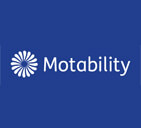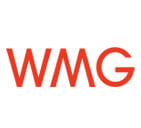Think you know your UK road signs? Robins & Day tests the nations knowledge.
As drivers, we pass hundreds of road-signs each year whilst motoring. Some are likely to be very familiar to us, such as the signs that warn us that there are speed cameras ahead, whilst others are a tad more confusing.
Whilst taking your driving theory test may not be at the forefront of your mind at present, there is no better time to brush up on your knowledge of the road signs you might find on Britain’s roads – no matter what your age or experience level.
The team at Robins & Day has been testing the nation on their knowledge on Britain’s road signs via a quiz.
Breaking down road signs
Firstly, here is a quick reminder of the general rule of thumb when it comes to road signs in the UK. With literally hundreds of signs lining Britain’s roads, always remember that the shape of the sign is the key pointer:
Circular: Take note, as these signs give orders. Ignoring a circular road sign is possibly the biggest faux pas of the three, as doing so could land you in real trouble with the law.
Those circled in red, such as a speed limit or a ‘no overtaking’, are instructing you what you must do, whilst those with a blue border, for example ‘one way’ or ‘right turn ahead’, tend to be considered as giving a more positive set of instructions.
Rectangular: Rectangular signs are both informational and indicative, for example, letting you know which lane is a bus lane. Often, the colour of the sign depends on the location you’re likely to find them:
- Blue – provides road users with information, found on a motorway
- White – gives information or directions for those using minor roads
- Green – found on an A-road (or primary road), offers direction.
Triangular: From hazards you may encounter ahead, to changes in the road layout, triangular signs are there to provide you with ample warning, which is why they tend to have a red border.
Confidence on the road
With the UK’s driving theory test pass rate in 2019/20 just 47.7%, it’s clear to see it’s no easy feat remembering all those road signs! We were keen to learn more about how confident UK drivers felt on the roads, especially when it comes to reading and understanding common road signs.
Our research found that 15 per cent of UK drivers admit to having crashed or caused an accident due to confusion when it came to road signs, and a further 13 per cent have done so more than once. It’s not just young drivers that have been involved in a crash due to road sign confusion, with a third (34%) of respondents admitting to having crashed at least once due to misreading a road sign.
In fact, a third (27%) of motorists stated they are not confident they could pass their driving theory test if they were asked to take it again today, and 1 in 10 (10%) said they’re sure they couldn’t pass.
Almost double the amount of men (19%) than women (11%) were found to have crashed their vehicle due to misreading a road sign, yet women were less confident when it came to their theory tests. In fact, 10% more men (31%) than women (22%) stated they were confident they would pass their theory test if they were to retake it today.
It seems that age may be a key factor when it comes to our confidence on the roads too, but not in the way that you might think.
The most confident age group were found to be the 25-34 year olds, with 39% stating they believed they would definitely pass their theory test again – perhaps because they completed it most recently - whilst the least confident were discovered to be those that fall in to the 45-54 year old bracket, with less than a fifth (13%) believing that they would be able to do so.
Testing the Nation
In a bid to find out how well the nation would really do when faced with UK road signs, we created a test using a combination of images they may (or may not) come across whilst out on the roads.
The average score from respondents is a respectable 61%, with no one who has taken the test (so far) scoring full marks.
Drivers from Bristol came out on top, with an average score of 64%, whilst drivers hailing from Norwich were the lowest scoring, with 58.9% on average.


 Find us
Find us
 Call us
Call us
 My account
My account

 My account
My account













